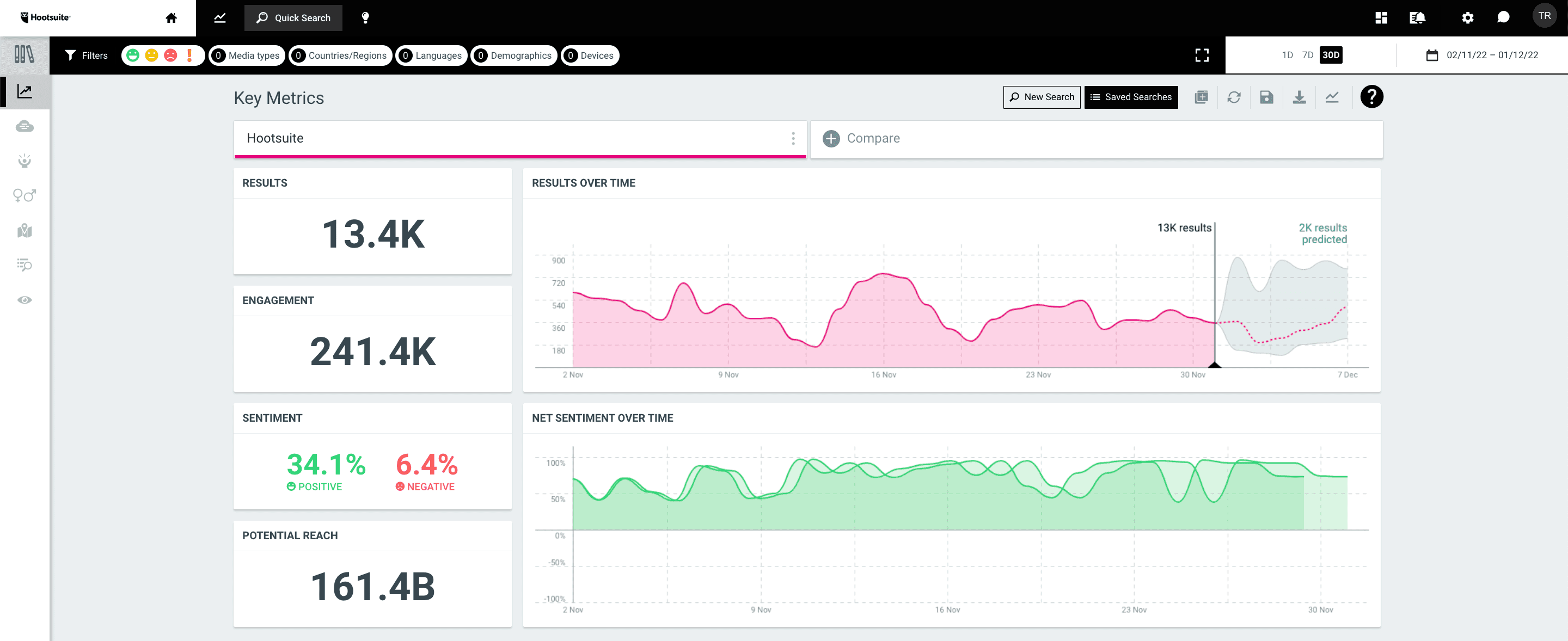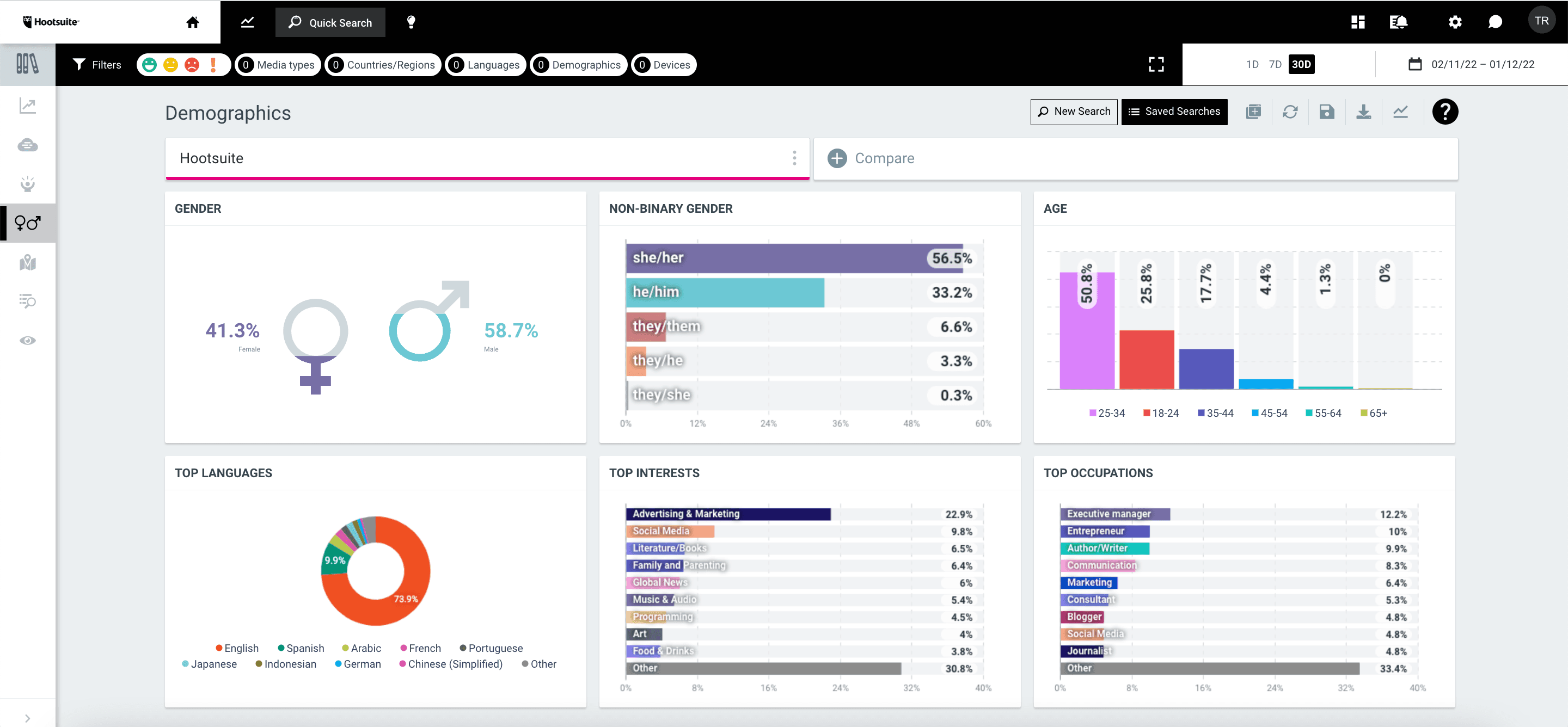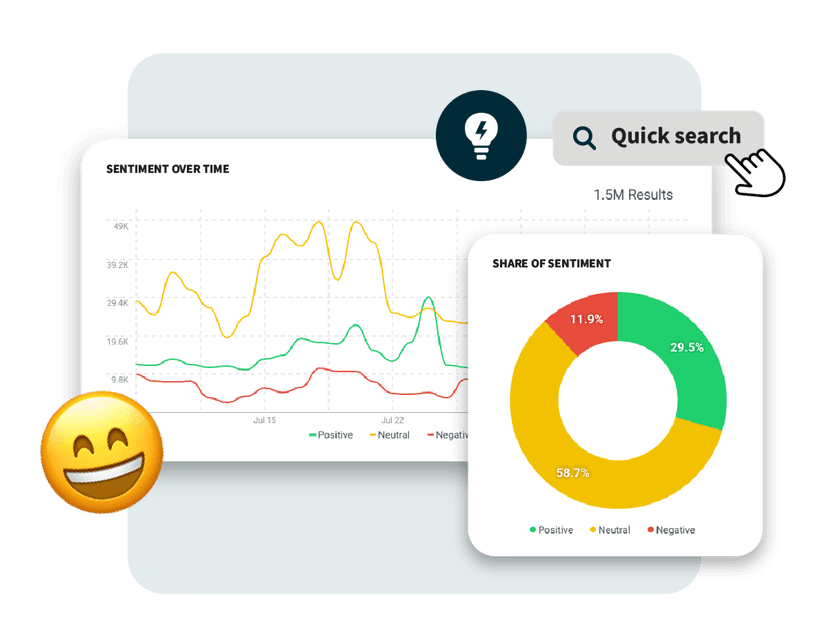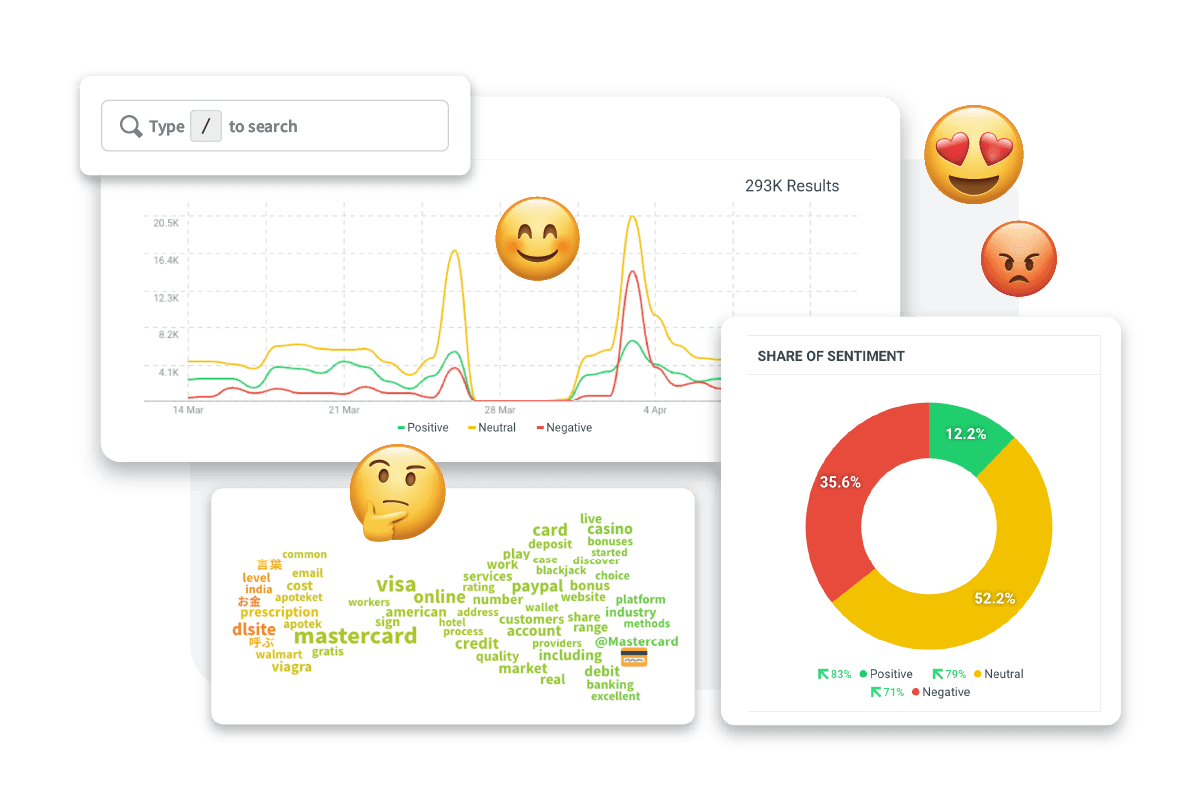See how people feel about your brand with this free brand sentiment analyzer
Wanna know if your brand, a trending topic, or a creator gives off good vibes or is a hot-button issue? You got it.
Please note: This tool may display inaccurate or offensive material that doesn’t represent Hootsuite’s views. You’re solely responsible for use of any content generated using this tool, including its compliance with applicable laws and third-party rights.
Longing to learn more about how your brand, industry, or a specific topic is perceived online? Use this free brand sentiment analysis tool to get the bigger picture in just one click.
What is brand sentiment?
Brand sentiment is the collective perception and feelings people have towards your brand, product, or service. Think of it as a customer giving a thumbs-up or thumbs-down to your brand.
Positive sentiment means people are loving what you're doing, while negative sentiment signals potential areas for improvement or issues to address.
Understanding brand sentiment is crucial because it gives you insights into how people think about your brand — whether they're happy, indifferent, or maybe not so thrilled.
By tracking brand sentiment, you can stay in tune with your audience, identify trends, and make informed decisions to strengthen your brand's reputation and connection with your audience. It’s all about understanding how people feel about your brand and using that insight to shape your strategy and build stronger relationships with your customers.
How to measure brand sentiment
Wondering how to measure sentiment? It's like trying to gauge the vibe of a room full of people — it requires a keen ear and a knack for picking up on subtle cues.
Here's how to do it:
1. Use social listening tools
Social listening tools allow you to monitor brand mentions, keywords, hashtags, and conversations in real-time, giving you a pulse on public sentiment as it unfolds. Pay attention to the tone, context, and themes of these conversations to gauge social media sentiment accurately.
Are people buzzing with excitement about your latest product launch, or are they grumbling about a recent customer service snafu?
Are people mentioning your brand more this month than last? Why is that? What have you done differently?
How many mentions are your competitors getting, and how can you steal some of that sentiment for yourself?
By tuning in to the chatter, you can identify sentiment trends, spot emerging issues, and respond proactively to maintain a positive brand image.
Tools like Hootsuite Listening can help you tune into conversations across the internet, tracking hashtags, keywords, competitors, and more, to give you a detailed picture of your brand sentiment analysis.

2. Collect data directly from your audience
Don't underestimate the power of direct feedback from your audience. Surveys, feedback forms, and customer satisfaction scores are valuable sources of sentiment data, providing insights straight from the customer’s mouth.
Use these tools to gather qualitative feedback on customer experiences, perceptions, and emotions related to your brand. Ask open-ended questions that encourage respondents to share their thoughts and feelings in their own words, giving you rich insights into their sentiment and sentiment drivers.
Once you have the data, compare it to the brand sentiment tracking you’ve collected through social media. How is it the same? How does it differ? You might uncover that your audience engages differently on different channels, allowing you to unlock new insights into how to tailor your content to every audience segment.
3. Calculate your sentiment analysis score
Finally, crunch the numbers to calculate your brand's sentiment score. This involves assigning labels — such as positive, negative, or neutral to each mention based on its sentiment.
Then, assign a numerical value to each score (for example: positive sentiment could be +1, neutral is 0, and negative is -1). Now, add up your score and see where you end up.
Tracking your brand's sentiment score over time can help you measure changes in perception, track the effectiveness of your brand initiatives, and identify areas for improvement.
How to use this brand sentiment analyzer
Now that you understand what brand sentiment is all about, here’s how to get a brand sentiment analysis free using this tool.
Psst… it’s surprisingly easy.
Step 1: Enter your brand name, topic, or creator
Within the tool, you’ll see an input box asking you to input your brand name, industry, a hot topic, or the name of a creator. Type it here.
Step 2: Click Analyze
Now, click Analyze, and watch your custom brand sentiment analysis appear!
Tips for how to use sentiment analysis in your social strategy
Ready to put your brand sentiment analysis tools to work? Keep these tips in mind as you build your social media strategy.
Tailor your posts to your audience
Craft your content with your audience in mind. Look closely at the topics and themes that resonate best with your audience. If you spot consistent praise for certain products, campaigns, or values, consider doubling down on those topics for your content strategy.
On the flip side, if sentiment analysis uncovers areas of concern or negative feedback, take note. Use this valuable insight to clear up any misunderstandings, provide solutions, or adjust your messaging strategy as needed.

Engage with your audience wisely
Not all feedback requires a response, but it's good to know when to engage with your audience (and when to back off). For example, if a recent product bug made your product unavailable for a certain amount of time, your audience likely expects a quick response. But, if a customer is bashing your brand online for seemingly no reason, it might be best to just let it go — at least until they have a legitimate complaint.
Use brand sentiment analysis to identify the sentiment behind different types of feedback.
Positive sentiment? Say thank you and show your appreciation.
Negative sentiment? Take the opportunity to address concerns and demonstrate your commitment to customer satisfaction.
Neutral or mixed sentiment? Use it as an opportunity to gather feedback and improve your products or services.

Analyze competitor sentiment
Don't forget to keep tabs on your competitors' sentiment as well. Analyzing competitor sentiment can provide valuable benchmarking insights and help you identify areas where you can differentiate yourself. Or, even ward you off bad decisions before you make them.
For example, let’s say you and your competitor are both set to release a big AI tool to your target market. Your competitor gets to market first (bummer) but soon after their release, you see an onslaught of negative comments from users complaining that the tool is way too slow. You check your own tool and, yikes, it’s running at just the same speed. Luckily, you already know your customers want a faster product, so you can now push your launch and get back to the development floor.
Pay attention to sentiment trends within your industry and use them to inform your own strategy and positioning.

Monitor brand sentiment changes over time
Brand sentiment is not static — it can change rapidly in response to external events, marketing campaigns, or product launches. Continuously monitor brand sentiment and topics over time to track changes and identify emerging trends.
Is a recent election influencing your target market’s buying interest? Is your new employee advocacy strategy showing a positive uptick in sentiment?
Adjust your strategy accordingly to maintain a positive brand image and address any issues or concerns that arise.
Try brand sentiment analysis with Hootsuite
New to keeping tabs on social chatter? Let Hootsuite show you the ropes. The Hootsuite dashboard comes with everything you need to analyze sentiment, track trends, monitor mentions, and more.
Here's what you get with Hootsuite:
Sentiment analysis: Understand how people feel about your brand, competitors, or a specific topic.
Trending topics: Explore trending topics by category and location, facilitating seamless content creation and engagement.
Mention search: Instantly see what people are saying about your brand, keywords, competitors, and the industry as a whole.
Forecasting: See what will trend before your competitors.
Learn more about our latest features, and sign up for a free 30-day trial of Hootsuite today.

Track brand sentiment automatically
Keep an eye on brand sentiment and search millions of conversations right from the Hootsuite dashboard. Listening is included with every plan.

Monitor everything people are saying about your brand or industry
Soon every Hootsuite plan will include deeper social listening capabilities. Keep an eye on mentions, brand sentiment, trending topics, and more — right from the Hootsuite dashboard.
